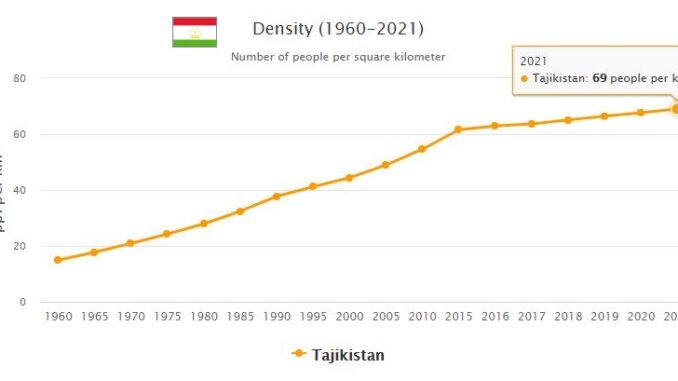
Yearbook 2013
Tajikistan. According to Countryaah, the authoritarian regime under President Emomali Rachmon was challenged at the beginning of the year by a group of entrepreneurs who criticized corruption and inefficiency. The group was led by former Industry Minister Zaid Saidov, who in April announced the formation of a new political party, New Tajikistan.
A few weeks later, Saidov was arrested and charged with a host of crimes: fraud, bribery, abuse of position, blackmail, polygamy, rape and sex with minors. He denied and claimed that the regime struck against him because of the new party. When Saidov’s sympathizers demanded that he be released, they were sentenced to short prison terms. When the trial against Saidov began in October, he refused to stand on the grounds that his case had not received a fair trial.
Other regime opponents were also brought to trial. Two men were sentenced to 20 and 15 years in prison for membership in the militant Islamist group Jundallah. A journalist who criticized the authorities was sentenced to eleven years in prison for financial blackmail against a woman. He had previously been convicted of slander and was prohibited from working as a journalist.
During the year, the police arrested a number of students who drove a car to their lessons. According to a human rights organization, students have been forced in writing to stop driving or threatened to quit their studies. There have already been bans on mobile phones, jewelery and “daring” clothing in schools and universities, then on the grounds that many could not afford to get these things.
Prior to the November presidential election, there was a growing use of social media, which made many people independent of state-controlled information. The regime saw the danger with this and blocked unwanted websites during the year.
The authoritarian Rachmon, who ruled the country for over 20 years, had five candidates against him in the election. However, the real opposition candidate was not allowed to stand, probably because of his criticism of the system, even though the formal reason was the lack of signatures for registration. It was human rights activist Oinichol Bobonazarova, nominated by a coalition with the Social Democrats and the Islamic Renewal Party.
According to official figures, President Rachmon won with over 83% of the vote. After the election, the president appointed a new prime minister, Qohir Rasoulzoda, former governor of the Sughd province.
Despite the large margin of victory, Rachmon was able to count on social tensions in a country where about 50% of the population lives in poverty. Nearly half of the country’s GDP comes from just over a million Tajikistanis working abroad, mainly in the Russian Federation.
- According to AbbreviationFinder.org, Dushanbe is the capital city of Tajikistan. See acronyms and abbreviations related to this capital and other major cities within this country.
Economic conditions
Within the Soviet system, Tajikistan limited itself to supplying raw materials and semi-finished products, especially cotton and aluminum. With the collapse of the USSR, the fragility of the internal system and the difficult structural conditions were further amplified by the nefarious effects of the civil war. In fact, during the 1990s, industrial and agricultural production fell sharply, GDP collapsed and inflation reached 4-digit values. Only between the end of the 1990s and the beginning of the new century did Tajikistan embark on the path of economic recovery, introducing some cautious reform in a liberal sense and its own national currency (the somoni). The GDP therefore returned to growth in the two-year period 1999-2000, up to exceeding 10% in 2004, before falling again (3,
The Tajikistan has huge natural resources (uranium, silver, gold, aluminum, coal, oil, natural gas and water) that are not yet adequately exploited and on which the attention of regional powers and international investors are focusing. The main productive sector remains agriculture, which employs about 66% of the workforce and contributes 24% to the formation of the GDP. In addition to cotton, cereals (wheat, barley, corn, oats), potatoes, vegetables and fruit are produced.
The breeding, practiced in particular on the plateaus and not infrequently in itinerant form, counts over 3 million sheep and about 1 million cattle.
The industrial sector, which accounts for 31% of GDP, is in dire need of restructuring and diversification. It is dominated, in fact, by the production of aluminum, with an important complex in Tursonzoda, managed by the Tajikistan aluminum factory. For the rest, there are only a few factories for agri-food and textile production and some foreign companies operating in the mining sector.
Among the artisanal productions, that of carpets stands out, made with traditional methods, with refined and precious textures. The production of electricity is remarkable, thanks to the presence of numerous watercourses, about eighty power plants.
The trade balance is constantly in deficit: in 2007, the deficit was over 600 billion dollars, despite the increase in exports of cotton, aluminum and electricity and their price increase on international markets. The main trading partners remain the countries of the former USSR, but trade with both Western European countries and China is increasing.
